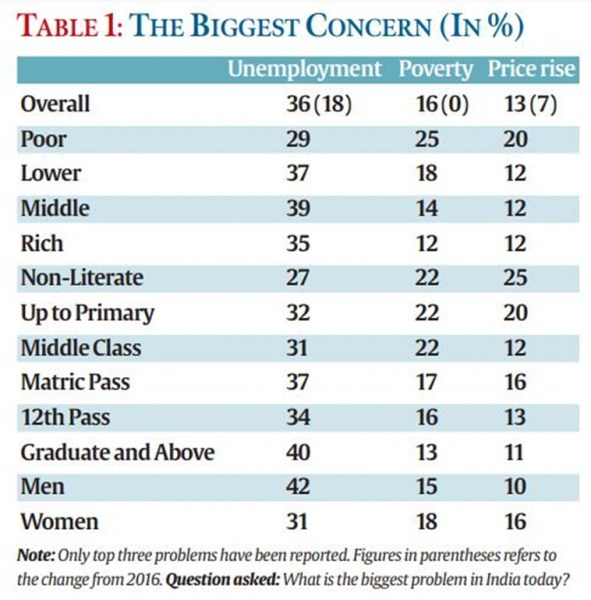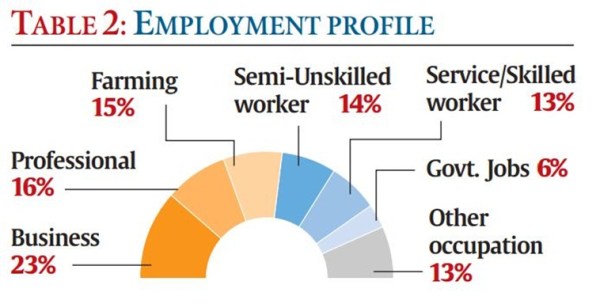CENTRE FOR THE STUDY OF DEVELOPING SOCIETIES (CSDS) SURVEY
More than one in three (36%) Indians between the ages of 15 and 34 believe unemployment is the biggest problem before the country. About one in six (16%) think it is poverty, and 13% think it is inflation.
These findings, which are part of a report released by Lokniti-CSDS , suggest that the youth identify challenges relating to the economy as the most significant facing the nation.
The report offers insights into career aspirations, job preferences, and expectations of younger Indians.
About 6% of respondents identified corruption as the most significant challenge; 4% each identified problems in education and high population.
2. Key takeaways
- The proportion of youth identifying unemployment as the biggest problem has increased by 18 percentage points from the results of a similar survey in 2016
- The share of those identifying price rise as the primary concern has increased by 7 percentage points
- While the data from the 2023 survey conducted in 18 states with a sample of 9,316 respondents show unemployment as a significant concern across all economic classes, it is particularly pronounced among middle-class youth
- Also, as many as 40% of highly educated respondents (graduate and above) identified unemployment as the most pressing concern
- In contrast, only 27% of non-literate individuals cited unemployment as their primary concern, likely due to their greater willingness to take on a range of jobs
- Forty-two per cent of men said unemployment was the most significant problem; among young women, this number was 31%
- Poverty and price rise emerged as a more prominent problem for youth from lower economic backgrounds
- A larger proportion of women (across economic classes) expressed concerns about price rise and poverty

3. Occupational Status
- 49% were engaged in some form of work, 40% had full-time jobs; 9% were working part-time
- Almost a fourth (23%) of youth with jobs were self-employed
- Sixteen per cent were professionals such as doctors or engineers,15% were involved in agriculture, and semi-unskilled and skilled workers made up 27% of the total
- Only 6% were in government jobs
- About 20% of working youth chose their job out of an interest; an almost equal proportion (18%) took the only option they had

4. Govt jobs vs Private jobs
Three out of five likes government jobs, and more than one out of four likes to have their own business
he preference for setting up an own business has grown consistently over this period — from 16% in 2007 to 27% in 2023
5. About the Centre for the Study of Developing Societies (CSDS)
The Centre for the Study of Developing Societies (CSDS) is an Indian research institute for the social sciences and humanities. It was founded in 1963 by Rajni Kothari, a renowned political scientist and social scientist. The Centre is located in New Delhi, close to Delhi University
CSDS is an autonomous institution, but it is largely funded by the Indian Council of Social Science Research (ICSSR), a government body. The Centre has a wide range of research programmes, covering a variety of topics, including politics, society, economics, environment, and culture. CSDS also has a number of teaching and training programmes, and it publishes a number of journals and books
Source: indianexpress



